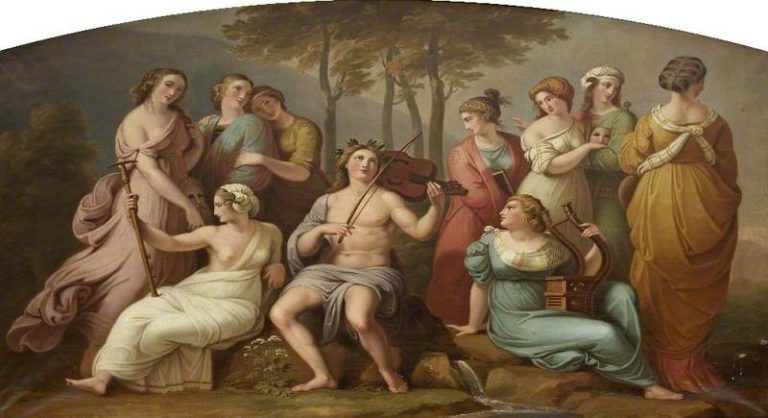Sumerian Mythology and the Concept of God

The most important myths of culture under consideration are mostly cosmogonic or myths of the creation of the universe, the sacred stories that have been extracted and developed in an effort to explain the birth of the universe, and the existence of man. The basis of the Sumerian religious belief structure is the pantheon (union) of gods. Sumerian gods, which are quite numerous, were conceived in a system, and thanks to the mental imaginations of the Sumerians, these gods were not only a theological belief but were described as rooted beings in culture, literature, and mythology. It was thought that the continuity and functioning of the universe continued thanks to the control and administration of these gods. The Sumerians named each of these gods with the word dingir.
Sumerian Gods were conceived as human beings and other human qualities other than death were attributed to these gods within the framework of their own beliefs. In Sumerian texts, these gods eat, drink, marry, have children, get sick, etc. It is seen that the basic nature of human beings, needs, and feelings are present. In addition, it is understood that their extraordinary powers are also subject to certain laws and laws. At the same time, it is seen that they cannot achieve what they want, sometimes they can set up various plans for their purposes and engage in a number of behaviors that we can call cheating and cunning. Although the Sumerian Gods were depicted as human beings, they were depicted with a number of divine signs and symbols. These symbols, which are related to their divine powers, differ in each god. For example, Nergal was depicted as a wild lion or lion-demon. The situation of gods associated with objects in the Sumerians is controversial. It is uncertain whether the transcendent being accepted as God is the object itself or a symbolic expression of this object. For example; It is not clear whether the shining moon in the sky is Nanna-Sin herself, or a manifestation of Nanna-Sin, one of the gods in the pantheon. According to the Sumerians, the gods’ family formation and having children like human beings caused the formation of a pantheon in the understanding of God. In addition, there has been interaction with the environment, culture, and societies at the point of belief. The position of the gods in the pantheon is linked to the development of Sumerian cities.
If the Sumerians wanted to learn the opinions of the gods on any matter, they would first go to the priests and ask them to mediate between them and God, communicate with God, and express their wishes and troubles. In such a case, the victims would be sacrificed and some conclusions would be drawn based on the markings on the victim’s liver. The meanings of these signs could be understood from the tablets found in the temples. The priest usually interpreted these marks and directed the person who came in according to the comments he took from the marks. In the Sumerian religion, every object and being a person saw, felt, thought, and imagined around him had a god. Undoubtedly, in religion with so many gods, not all gods were of the same and equal level and of similar characteristics. The more important the object envisioned the more superior the god of that object had. For example, it was impossible to consider the sun god Utu and the god Nindub, who was responsible for buildings and architecture, in the same category. There were also deities who were subjects and ministers of the gods, who were their helpers. The gods in the pantheon were divided into various groups according to their powers, responsibilities, and powers. The Pantheon consisted of the seven gods that determined the destinies (An, Enlil, Enki, Ninhursag, Nanna-Sin, Utu, Inanna), the great gods of the Sumerians, consisting of fifty deities, gods without creative power, deities in the nature of other gods, and all other gods.
When the tablets are examined, the triple god understanding consisting of An, Enlil, and Enki in the pantheon of gods is quite dominant compared to the others. Universe elements were characterized in these three gods, other gods were expressed with simpler elements. According to this theology, the sky, earth, and surrounding waters were formed under the responsibility of these three gods. This trilogy, which emerged from the prediction of air, water, and soil, evidently derives from the ideas of the Sumerians about the universe and the idea of the main elements of matter. Just as these elements are needed to complete the cosmos according to the Sumerians, it is only possible with this trilogy for the divine system to become fully functional. In the sources about the Sumerian religion, it was enough to make plans and use the divine word in the requests of a god about creation. Because in Sumer, as in many theological systems, the divine word had creative power and one word was more than enough for something to happen.
Movies by Country: 6 Movies from 6 Countries – I
References
– ALTINUCU, A.(2004). Sümerlerde Tanrı Anlayışı Ve Tanrılar Panteonu. Sosyal Bilimler Dergisi, 4, 7.
-KRAMER, S. (1999). Sümer Mitolojisi. s.66. Kabalcı .
Author: Hatice Daglikan







